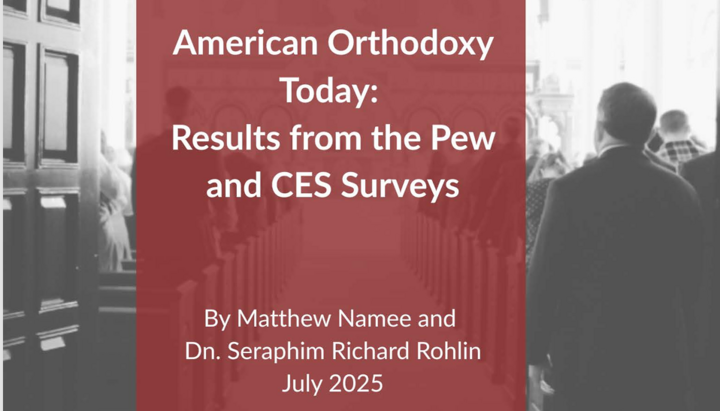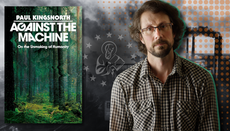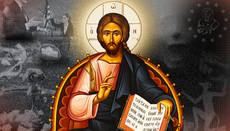New Studies Show: Orthodoxy Is Growing Faster Than Ever

A new analysis by the Orthodox Studies Institute finds that the Orthodox are younger, more male, and more immigrant-heavy than any other Christian group.
JULY 17, 2025 — A recent analysis by the Orthodox Studies Institute paints a fascinating picture of Orthodox Christianity in the United States. Drawing from recent surveys from Pew Research Center and the Cooperative Election Study, OSI reveals a demographic that is distinct from other Christian groups. Put simply, Orthodox Christians are younger, more male, and more immigrant-heavy than any other Christian group.
With an estimated 1.6 million adherents—unchanged from last year—Orthodox Christians make up roughly 0.5 to 0.6% of the U.S. population. However, this figure likely underestimates their true presence, as the Orthodox population skews younger, and younger generations are often underrepresented in traditional survey methods.
As noted in the surveys, “the methodologies of both Pew and CES tend to oversample older adults and undersample younger adults. We also know from the Pew and CES surveys themselves that their Orthodox samples skew younger–and this means that both surveys are likely under-counting the number of Orthodox Christians in America. Put another way: if you don’t survey very many people from the Millennial and Gen Z generations, but there’s a higher concentration of Orthodox people in those cohorts, you’ll end up with a lower concentration of Orthodox in your survey than there is in the overall population.” This suggests that the actual number and percentage of Orthodox Christians in the U.S. are almost certainly higher than reported.
Orthodox Christians stand out for their youth compared to other religious groups. The CES found that 22% of Orthodox respondents are Gen Z, a higher share than any other religious group. Amazingly, this includes atheists, agnostics, and the religiously unaffiliated. Pew data further supports this, noting that 16% of Orthodox Christians were born in the 1990s or 2000s. The median age of Orthodox Christians is 48, significantly younger than Roman Catholics (58), Evangelicals (59), and Mainline Protestants (63).
The Orthodox community is also notably male-dominated, with 53-55% of respondents identifying as male. This contrasts sharply with other Christian denominations, which tend to have a female majority. Additionally, the Orthodox population is heavily immigrant-influenced: 40% are immigrants, and 25% are children of immigrants, placing Orthodoxy behind only Hindus and Muslims in terms of immigrant representation.
American Orthodox Christians are among the most educated religious groups in the country. According to Pew, 35% hold graduate degrees, surpassed only by Hindus, Jews, Muslims, and Buddhists. When including those with four-year degrees, 63% of Orthodox Christians are college graduates, far outpacing other Christian groups.
However, the younger demographic and lower marriage rates among Orthodox Christians correlate with lower birth rates. While many Orthodox parishes are filled with children, the surveys capture self-identified Orthodox, including those who may not be active churchgoers. Many newer converts, in particular, are unmarried, which may contribute to this trend.
The racial makeup of American Orthodoxy largely mirrors the broader U.S. population. Pew and CES data show that 75-82% of Orthodox Christians identify as white, compared to 75% of the U.S. population. About 10% identify as Black, slightly below the national figure of 13.7%. Some of these Black Orthodox Christians may be of Ethiopian or Eritrean descent, however, meaning they most likely belong to the Oriential Orthodox Church and not the Eastern Orthodox Church.
Pew’s data on childhood religion provides insight into retention rates. Approximately 64% of those raised Orthodox still identify as such, outperforming Roman Catholics (56%) but trailing Protestants (70%). The Protestant figure, however, is less precise due to movement between denominations (e.g., from Baptist to Methodist), which Pew’s data does not fully differentiate.
Earlier studies estimated Orthodox retention at 58%, aligning closely with the current 64% figure. In essence, about six in ten cradle Orthodox remain in the faith as adults.
When it comes to religious practice, Orthodox Christians report relatively low rates of daily prayer, with only about 30% praying daily, similar to Roman Catholics and Mainline Protestants but far below Evangelicals, Mormons, and Jehovah’s Witnesses. Weekly church attendance is also modest, with roughly 25-33% of Orthodox Christians attending services regularly.
American Orthodox Christianity is a vibrant and evolving community, characterized by its youth, male majority, and significant immigrant presence. While the estimated 1.6 million adherents represent a small fraction of the U.S. population, their numbers are likely higher due to under-sampling of younger generations. Highly educated but less likely to be married or have large families, Orthodox Christians reflect a unique blend of tradition and modernity. Their retention rates and religious practices suggest a committed core, even as the faith navigates the challenges of engagement in a diverse and rapidly changing society.
Matthew Namee, Director of the OSI, told UOJ–USA that he and his colleagues are preparing “a gigantic study on Orthodoxy in the U.S.” This new study will offer much more clarity than polls conducted by organizations like Pew and CES.
Namee claims that his report will be the largest sample of Orthodox America in history. He believes current estimates of the US Orthodox population could be massively underreported.
Namee himself has been an outspoken critic of popular posts on social media claiming an increase by millions. Yet he now admits they might not be so far off after all. "My original estimate may have been off by 50 percent," he says. While this wouldn't put it anywhere near the 6 million figure commonly flaunted on social media, it is, nevertheless, a substantial increase if true.
While we'll have to wait for the study to be completed, Namee admitted, "I'm going to eat some crow."
To read the full study or support the OSI, please visit their website.









